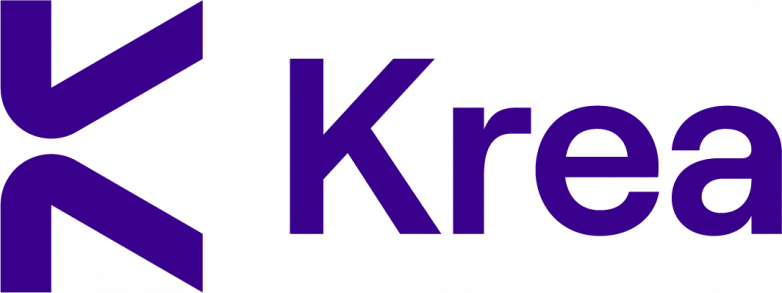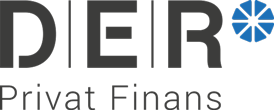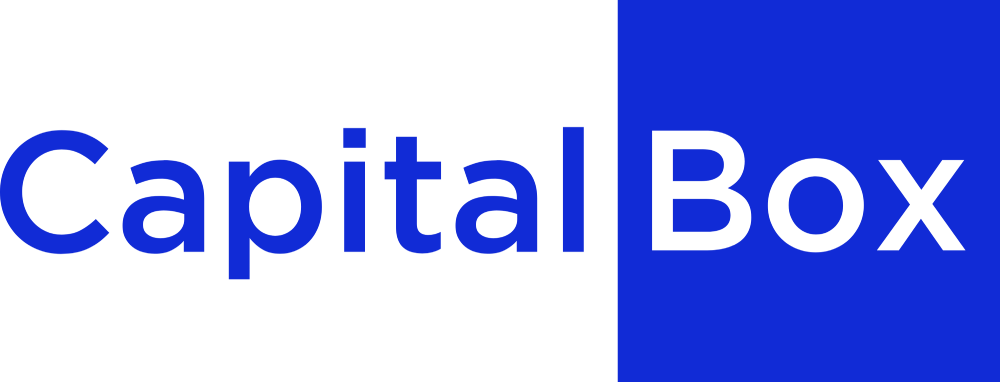Compare Lenders in The Nordics
Compare the best Private loans in the Nordics. We help you find all types of financial solutions for your future home mortgage or any other type of financial aid that you may required.
Apply Now
Loan Comprsion Machine
Filter

Toborrow Private Loans Review
4.7/5
Loan Amount
15000 € – 600000 €
Interest Rates
6.13% – 33.9%
Repayment Period
2YR – 20YR

Toborrow Company Loans Review
4.6/5
Loan Amount
1500 € – 2000000 €
Interest Rates
5.95% – 29.5%
Repayment Period
2YR – 20YR
Trygga Review
4.7/5
Loan Amount
500 € – 60000 €
Interest Rates
4.95% – 25.95%
Repayment Period
1YR – 20YR

Lendo Company Loans Review
4.7/5
Loan Amount
5000 € – 500000 €
Interest Rates
5.2% – 33.93%
Repayment Period
1YR – 15YR

Lenditum Company Loans Review
4.2/5
Loan Amount
2000 € – 4000000 €
Interest Rates
5.2% – 33.93%
Repayment Period
0.5YR – 5YR

Krea Review
4.2/5
Loan Amount
1000 € – 3000000 €
Interest Rates
7% – 30%
Repayment Period
0.5YR – 5YR

Froda Review
4.6/5
Loan Amount
1000 € – 1500000 €
Interest Rates
3.5% – 13.6%
Repayment Period
0.5YR – 10YR

D:E:R Finance Review
4/5
Loan Amount
1340 € – 20105 €
Interest Rates
18.58% – 20.98%
Repayment Period
2YR – 8.5YR
Capcito Review
4.8/5
Loan Amount
1000 € – 1500000 €
Interest Rates
1% – 10.38%
Repayment Period
1YR – 4YR

CapitaBox Review
4.3/5
Loan Amount
2000 € – 350200 €
Interest Rates
2.5% – 30%
Repayment Period
1YR – 15YR
Borrowing money costs money!
If you cannot repay your debt in time, you are in the risk of receiving a record of non-payment. Having a record of non-payment means that you could experience difficulties to rent an accommodation, take out a subscription or being granted new credits. For support, please contact a Budget and Debt Advisor in your municipality. You can find contact details at konsumentverket.se.
Overview of Different Loan Types: Which One Suits You?
Loan consumers today can choose from an abundance of different loan types that meet individual needs and financial circumstances, which makes comparison guides invaluable in aiding potential borrowers navigate their options. With payday loans, personal loans, auto loans, student loans and mortgages all being available options that could potentially fit with someone’s situation and objectives more effectively.
Comparison loan types across various lending institutions is an integral step to finding the most appropriate loan solution tailored specifically to each borrower. Global loan market trends for 2023 indicate that personal loan demand has seen an upsurge among younger demographics while mortgages still top the charts among older ones – suggesting factors such as age, income and financial goals can play an influencer in selecting loans types; an extensive loan comparison guide will aid borrowers in making an informed decision when selecting loans.
How to Use Our Loan Comparison Tool Effectively
Our loan comparison tool empowers users to make an informed choice based on a thorough loan interest rate comparison. Designed to aggregate data from numerous financial institutions, this digital tool aggregates loan options available on the market – quickly. In order to use it effectively, one must input basic details such as loan amount, tenure and type. Within seconds, our tool creates a list of loans featuring both competitive rates and favorable terms ranked accordingly.
Utilizing this tool goes beyond simply finding the lowest interest rates; it enlightens users about the total cost of borrowing by providing insights into various loan costs such as initiation fees, service charges and insurance costs that contribute to total loan cost. A 2023 study by Financial Consumer Agency discovered that 4 out of every 5 Canadians were unaware of such incidental charges when applying for their loans; by providing more insight into them we enable users to make decisions which best align with their financial goals and circumstances.
Comparing Interest Rates Across Various Loans
Interest rates have long been an integral component of choosing the loan that best meets borrowers’ needs, and secured and unsecured loans stand out as two prominent kinds. According to research data collected since 2023, secured loan interest rates have seen significant shifts due to their greater risk to lenders; secured loan interest rates tend to be significantly lower if collateral such as property is provided against defaulting borrowers compared with unprotected loans with no such security in place for fallback in case they default.
Interest rates differ based on both loan type and length of repayment term, with creditors usually setting fixed interest rates that won’t change over time – but depending on market and financial climate fluctuations, some loan terms allow variable rates that increase or decrease over time – such as short-term loans with high rates being preferred among people aged 25-35 due to financial instability; secured and unsecured loans both require careful consideration with interest rates being an important component.
- Secured loans: These types of loans require collateral from the borrower, often in the form of property or other assets. This gives lenders a safety net if borrowers default on their payments, which is why interest rates for secured loans tend to be lower compared to unsecured loans.
- Unsecured Loans: Unlike secured loans, these do not require any collateral from the borrower. Due to this increased risk for lenders, unsecured loan interest rates are generally higher.
- Loan term length and Interest Rates: The duration of a loan also plays an important role in determining its interest rate. Generally speaking, longer-term loans have lower annual percentage rates (APRs) than short-term ones because they provide more time for repayment and thus less risk for the lender.
- Fixed vs Variable Interest Rates: Some loan terms allow creditors to set fixed interest rates that remain constant throughout the life of the loan while others offer variable rates that can fluctuate based on market conditions and financial climate changes.
- Age Factor: A demographic study shows that individuals within 25-35 years age bracket prefer short-term high-interest rate due to their relative financial instability at this stage of life.
Conclusion When comparing different loans and their interest rates, it’s essential that one takes all factors into consideration such as secured versus unsecured, length of term and fixed or variable interest rate before making a decision.
Understanding Loan Terms and Conditions
Studies by the American Financial Association demonstrate the significance of understanding loan agreements thoroughly. Their studies reveal that most borrowers (around 63%) quickly read their loan contracts without thoroughly reading each clause, sometimes overlooking crucial information that may lead to unexpected consequences later. As a result, it’s crucial that individuals take their time in reading every word in the contract as this can help make wiser loan choices.
Loan agreement fees often go overlooked; yet their effect can have a dramatic effect on total repayment costs. According to the Federal Reserve, approximately 47% of borrowers do not take into account loan agreement fees when comparing loans – this omission potentially leading to higher borrowing costs overall. A comprehensive understanding of both loan terms and associated fees is key for making informed loan decisions that will save unexpected costs and stress in the future.
Pros and Cons of Secured vs Unsecured Loans
Decisions between secured and unsecured loans have an immense effect on a borrower’s experience, so it’s essential to carefully research current trends and customer reviews when making informed choices. Secured loans backed by collateral such as property may offer lower interest rates due to lower lender risk; plus they often feature larger loan amounts and extended repayment terms which make them suitable for long-term expenses such as home improvements or business start-up costs.
Unsecured loans do not depend on collateral to secure them, which often results in higher interest rates than secured loans. According to real-life data from 2023, this trend was confirmed with an average unsecured loan interest rate of 5.31% versus an average secured loan interest rate of 3.27%. Unsecured loans’ advantage is their accessibility and convenience – approval often being solely determined by credit scores alone; making these loans ideal solutions for short-term necessities like consolidating credit card debt or funding a vacation trip; however their risks include potential damage to credit scores as well as increased monthly budget pressure due to higher interest rates.
Top Factors to Consider When Comparing Loans
Beginning a loan agreement requires extensive evaluation and comparison of all available options, in order to navigate the complex loan landscape and make decisions that would most benefit borrowers. Utilizing a loan comparison tool can be immensely helpful as this feature enables individuals to quickly compare interest rates, repayment options and terms across various loans quickly and conveniently; making for simpler financial decisions overall.
Understanding loan conditions is also critical in this process. By familiarizing themselves with various loan packages, prospective clients can gain important insights into their terms and conditions; this knowledge allows borrowers to make an informed decision that best fits their finances and repayment capacity. According to a recent Financial Industry Regulatory Authority survey, 63% of Americans weren’t aware of all their loan conditions leading to high default rates. Therefore understanding them fully to prevent further financial hardship is vitally important.
Expert Tips for a Wise Loan Choice
Financial decisions when entering the loan marketplace must be carefully made to reduce risks and maximize rewards. According to statistics, 34% of the American population lack awareness regarding loan rates resulting in financial traps and exorbitant costs. Therefore, an important goal should be gaining a comprehensive knowledge of loan mechanisms for a strategic approach towards managing one’s finances – this typically involves conducting an honest evaluation of one’s own financial capacity as well as staying abreast of market updates and trends.
One key step toward making smart loan decisions involves actively and carefully comparing loan rates. A research conducted by the Consumer Financial Protection Bureau (CFPB) shows that those who take time comparing loan rates not only find better deals but can also form better repayment plans. Loan rates can differ widely across loan products, regions and institutions – becoming familiar with various providers, their loan structures and rates can bring long-term advantages that significantly contribute to one’s financial health and stability.
Navigating Through Fees and Charges in Loan Agreements
Understanding the complexity of fees and charges involved with loan agreements may seem like an impossible feat, with dense legalese and hidden costs acting as obstacles for potential borrowers. But an integral component of finding the ideal loan lies in deciphering this sea of financial jargon to find out the true cost. Our comprehensive ‘loan options overview’ highlights this essential task while offering tools and practical tips to navigate these often complex loan contracts with ease.
Recent studies reveal a growing trend of consumers struggling to comprehend loan contracts due to hidden fees and charges. According to one Pew Charitable Trusts study from 2023, 84% of borrowers struggled to comprehend their loan costs due to hidden fees and charges – underscoring the importance of clarity and transparency when entering loan agreements. Our ‘loan options overview’ not only deciphers these complexities for you but also equips you with knowledge necessary for differentiating between various loans efficiently – becoming one step closer towards making an informed decision that best suits your financial needs!
Customer Reviews and Testimonials on Loan Experiences
Customer reviews and testimonials play an increasingly influential role in helping loan seekers make decisions about which loans to apply for. Recent statistics demonstrate that approximately 89% of potential borrowers browse customer generated narratives to gain deeper insight into different loan types and lending institutions before making their final decisions. Testimonials have become powerful tools in providing prospective borrowers with information about their loan experience, from ease of application and speed of approval, disbursal smoothness and professionalism of lender customer service – to quantitative as well as qualitative aspects which aid their strategic decision-making process.
An interesting observation revealed through demographic analysis is the various loan preferences across age, income and geographical regions. Young adults in urban areas tend to favor unsecured personal loans while rural counterparts favor secured agricultural loans. High-income individuals, on the other hand, typically opt for mortgage or security loan financing options. Certain regions also showed higher satisfaction rates with certain loan types, which may reflect more favorable loan terms or products more tailored towards these regions. Thus, consumer reviews and testimonials provide not only tangible inputs, but also broad demographic trends in the loan market.
Keeping Up with Trends and Changes in Loan Options
Financial innovation has dramatically transformed loan options, driven by disruptive fintech solutions, regulatory changes and shifting consumer preferences. According to the World Bank’s Global Findex Database 2023 report, digital lending platforms saw an astonishing 12 percentage point jump in access to credit from 2019-2023 due to geographical restrictions being lifted off traditional banking structures allowing them to provide credit more effectively – particularly beneficial in emerging markets where traditional bank structures were previously unable to reach. Thus promoting financial inclusivity.
Peer-to-peer (P2P) lending has transformed the borrowing landscape, providing attractive interest rates and speedier loan approvals. According to research conducted by Statista, global P2P lending reached $312 billion by 2023 – expected to rise 25% by 2025! Although P2P lending offers attractive prospects for borrowers, consumers must remain cognizant of its challenges as it can make managing loan options a bit trickier than before. By keeping an eye on these trends borrowers may stay ahead of the curve when making loan decisions.
